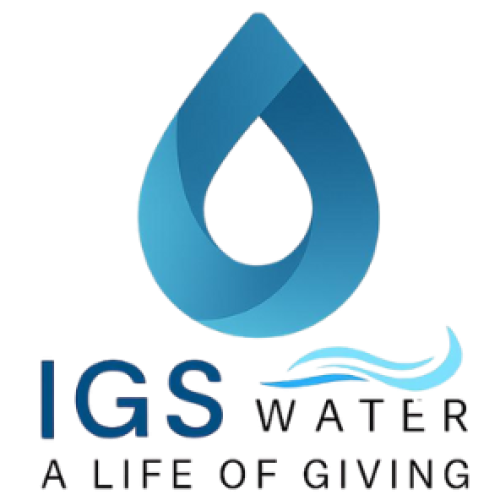Energy efficiency has become a top priority for businesses across all industries. With rising utility costs, environmental regulations, and increasing demand for sustainable operations, companies are now looking for smarter ways to reduce power consumption—without sacrificing performance. One of the most effective yet overlooked areas for energy savings is water management.
Modern water technologies, especially those focused on aeration, circulation, and oxygenation, are helping businesses dramatically cut operational costs. Systems that once consumed high amounts of electricity, required constant maintenance, or delivered inconsistent results are now being replaced by smarter, more efficient solutions designed for long-term savings.
From agriculture and aquaculture to commercial ponds, wastewater facilities, and industrial plants, companies are seeing how advanced water technology reshapes both energy use and overall productivity.
Below are the key ways businesses save energy with modern water tech.
1. More Efficient Oxygen Transfer
Traditional aeration systems use large motors, mechanical paddles, or surface agitation to push oxygen into water. These systems consume significant power but often deliver poor oxygen transfer efficiency.
Modern oxygenation systems—especially those using nanobubbles—use far less energy to achieve higher dissolved oxygen levels. Nanobubbles stay in the water longer, dissolve deeper, and provide superior oxygen distribution, meaning the system doesn’t have to run at full power just to maintain healthy oxygen levels.
This results in:
• lower electricity consumption
• faster oxygenation
• more stable water chemistry
• reduced runtime hours
Businesses achieve more with less power.
2. Reduced Need for Constant Operation
Older aeration and water treatment technologies typically run 24/7 just to keep systems functional. However, advanced solutions work more intelligently.
Modern systems deliver oxygen and water movement more efficiently, allowing shorter operation periods while still producing better results. When dissolved oxygen remains stable for longer periods, equipment does not need to operate continuously.
Less operating time means:
• less energy used
• fewer mechanical failures
• lower heat generation
• reduced maintenance workload
This alone provides significant cost savings for businesses with large ponds, tanks, and water bodies.
3. Eliminating Clogging and Mechanical Strain
Many traditional aerators and pumps lose efficiency over time due to clogging, debris buildup, or mechanical wear. When equipment is strained, it draws more power than necessary to maintain performance.
Modern water technologies—like IGS Water’s pure nanobubble generators and destratification systems—are designed to operate without clogging, even in environments with high solid concentrations. This ensures consistent performance without the energy spikes caused by mechanical resistance.
Consistent flow + no clogging = stable, low-power operation.
4. Improved Water Circulation Reduces Energy Waste
Poor water circulation forces equipment to work harder and longer to treat the same volume of water. Stratified water layers can trap heat, reduce oxygen, and create dead zones that require additional energy to correct.
Destratification systems break down temperature layers, stabilize the entire water column, and ensure that oxygen and treatment reach all parts of the system efficiently.
Because water becomes uniform and balanced, energy is no longer wasted trying to push oxygen or chemicals into isolated or stagnant areas.
5. Less Dependence on High-Energy Chemical Treatments
Chemical treatments—such as algaecides, clarifiers, sludge reducers, and flocculants—carry hidden energy costs. Applying them requires additional equipment, pumps, mixing systems, and manpower.
When modern water technology restores natural oxygen levels and promotes healthy biological activity, the need for constant chemical intervention is greatly reduced.
Less chemical usage means:
• fewer pumps and mixers running
• fewer treatment processes
• lower electricity consumption
• reduced operational labor costs
This creates a more sustainable, low-energy water management system.
6. Lower Maintenance Means Lower Energy Consumption
High-maintenance systems often demand restarts, recalibration, and periods of high-power operation just to restore function. Modern water technology reduces maintenance through:
• fewer moving parts
• corrosion-resistant designs
• non-clogging systems
• automated oxygenation performance
When equipment works efficiently without breakdowns, it consumes less energy and delivers more consistent results.
7. Designed for Long-Term Efficiency
The greatest advantage of modern water tech is long-term energy stability. Older systems degrade quickly, becoming less efficient and requiring more power over time.
Advanced systems are engineered to:
• maintain stable oxygen levels
• operate efficiently across seasons
• withstand variable water conditions
• deliver predictable energy usage year-round
Businesses benefit from predictable utility bills and long-term operational savings.
Why IGS Water Helps Businesses Save More Energy
IGS Water provides advanced water solutions that dramatically reduce power consumption across multiple applications. Our systems—including pure nanobubble generators and destratification technology—are engineered for efficiency, durability, and long-term savings.
With IGS Water, businesses can:
• improve water quality while reducing energy usage
• operate systems with fewer hours and lower power demand
• eliminate clogging and mechanical strain
• reduce chemical usage and additional treatments
• achieve sustainable, cost-effective water management
Energy-saving water technology is no longer optional—it’s the smart choice for modern operations.
IGS Water continues to lead the industry with solutions that deliver real results, long-term savings, and healthier water systems.

